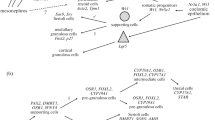Abstract
In mammals, including humans, males and females differ not only in physical appearance but in every cell of their body: male cells have a tiny Y-chromosome which females lack. Females instead have two X-chromosomes while males have only one. It is not universally true though, as majority of fishes, frogs, lizards and turtles have no sex chromosomes. Their sex is generally determined based on the environment (e.g. temperature) in which the eggs grow. Though, the Y-chromosome gene, Sry, triggers male development, it alone is not enough to differentiate the two sexes; orderly expression of a number of genes, generally present on the autosomes, is required to ensure differentiation of a specific gonad - testis or ovary. Individuals bearing testes become male while those having ovaries become female. Excepting the Y-chromosomal Sry, almost all other genes in this cascade are evolutionarily conserved throughout vertebrates. Mutually antagonistic interactions of the male and female pathway genes lead to the formation of the gonads that eventually determine the sex of the individual. Most disorders of sexual development occur due to mutations in any of these genes.
Similar content being viewed by others
Suggested Reading
Blanche Capel, Vertebrate sex determination: evolutionary plasticity of a fundamental switch, Nature Reviews Genetics, Vol.18, pp.675–689, 2017.
Andy Greenfield, Understanding sex determination in the mouse: Genetics, epigenetics and the story of mutual antagonisms, Journal of Genetics, Vol.94, pp.585–590, 2015.
Yuiko Matsumoto, RyoheiYatsu, Caitlin Taylor and David Crews, Changes in gonadal gene networks by exogenous ligands in temperature-dependent sex determination, J. Mol. Endo., Vol.50, pp.389–400, 2013.
Y Sadovy de Mitchelson and Min Liu, Functional hermaphroditism in teleosts, Fish and Fisheries, Vol.9, pp.1–43, 2008.
Rajiva Raman, Sex determination and gonadal differentiation in vertebrates: A case for unity in diversity, Proc. Indian Natn. Sci. Acad. (PINSA) B., Vol.6, pp.529–546, 2002.
Turk Rhen, Anthony L Schroeder, Molecular mechanism of sex determination in reptiles, Sex Dev., Vol.4, pp.16–28, 2010.
Ryohei Sekido and Robin Lovell-Badge, Sex determination and SRY: Down to a wink and a nudge?, Trends in Genetics, Vol.25, pp.19–28, 2008.
Acknowledgments
I thank Dr B. Nandy, for asking me to write this article for Resonance. I record appreciation for Dr Priyanka, my graduate student, for sparing an illustration from her work (Figure 1) and to Journal of Genetics for granting permission to reproduce Figure 4 from an article in the journal. Work on sex determination in my lab has been supported by grants from the Department of Science & Technology, New Delhi.
Author information
Authors and Affiliations
Corresponding author
Additional information
Rajiva Raman had his university education from Banaras Hindu University. After his retirement from the Department of Zoology at BHU as, he is now serving in the same department as Distinguished Professor. He is also the Senior Scientist of the Indian National Science Academy. He has a teaching experience of nearly 40 years.
Rights and permissions
About this article
Cite this article
Raman, R. What Makes an Individual a Male or a Female?. Reson 25, 233–247 (2020). https://doi.org/10.1007/s12045-020-0938-6
Published:
Issue Date:
DOI: https://doi.org/10.1007/s12045-020-0938-6




